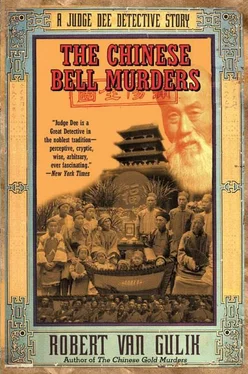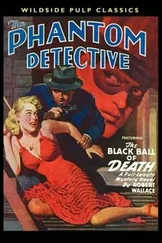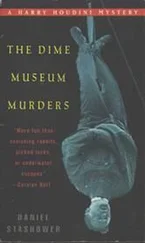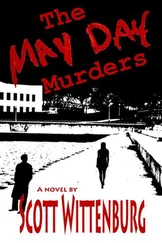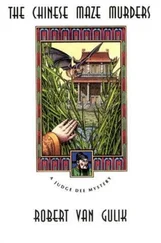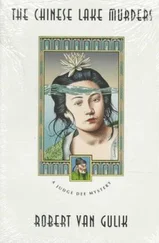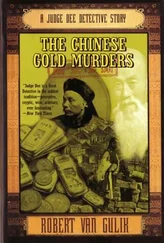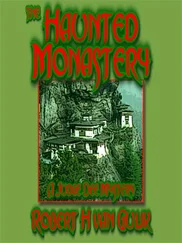A magistrate's term of office was usually three years. Thereafter he was transferred to another district, to be in due time promoted to prefect. Promotion was selective, being based solely on actual performance; less gifted men often spent the greater part of their lives as district magistrate.
In exercising his general duties the magistrate was assisted by the permanent personnel of the tribunal, such as the constables, the scribes, the warden of the jail, the coroner, the guards and the runners. Those, however, only perform their routine duties. They are not concerned with the detection of crimes.
This task is performed by the magistrate himself, assisted by three or four trusted helpers; these he selects at the beginning of his career and they accompany him to whatever post he goes. These assistants are placed over the other personnel of the tribunal. They have no local connections and are therefore less liable to let themselves be influenced in their work by personal considerations. For the same reason it is a fixed rule that no official shall ever be appointed magistrate in his own native district.
The present novel gives a general idea of ancient Chinese court procedure. The illustrations facing p. 50 and 280 show the arrangement of the court-hall. When the court is in session, the judge sits behind the bench, with his assistants and the scribes standing by his side. The bench is a high table covered with a piece of red cloth that hangs down in front from the top of the table to the floor of the raised dais.
On this bench one always sees the same implements: an inkstone for rubbing black and vermilion ink, two writing brushes, and a number of thin bamboo spills in a tubular holder. These staves are used to mark the number of blows that a criminal receives. If the constables are to give ten blows, the judge will take ten markers and throw them on the floor in front of the dais. The headman of the constables will put apart one marker for every blow.
One will also see on top of the bench the large square seal of the tribunal, and the gavel. The latter is not shaped like a hammer as in the West. It is an oblong piece of hardwood about one foot long. In Chinese it is significantly called ching-t'ang-mu 'Wood that frightens the hall.'
The constables stand facing each other in front of the dais, in two rows on left and right. Both plaintiff and accused must kneel between these two rows on the bare flagstones and remain so during the entire session. They have no lawyers to assist them, they may call no witnesses, and their position is generally not an enviable one. The entire court procedure was in fact intended to act as a deterrent, impressing the people with the awful consequences of getting involved with the law. As a rule there were every day three sessions of the tribunal, in the morning, at noon, and in the afternoon.
It is a fundamental principle of Chinese law that no criminal can be pronounced guilty unless he has confessed to his crime. To prevent hardened criminals from escaping punishment by refusing to confess even when confronted with irrefutable evidence, the law allows the application of legal severities, such as beating with whip and bamboo, and placing hands and ankles in screws. Next to these authorised means of torture magistrates often applied more severe kinds. If, however, an accused should receive permanent bodily harm or die under such severe torture, the magistrate and the entire personnel of his tribunal were punished, often with the extreme penalty. Most judges, therefore, depended more upon their shrewd psychological insight and their knowledge of their fellow men than on the application of severe torture.
All in all the ancient Chinese system worked reasonably well. Sharp control by the higher authorities prevented excesses, and public opinion acted as another curb on wicked or irresponsible magistrates. Capital sentences had to be ratified by the Throne and every accused could appeal to the higher judicial instances, going up as far as the Emperor himself. Moreover, the magistrate was not allowed to interrogate the accused in private, all his hearings of a case, including the preliminary examination, had to be conducted in the public sessions of the tribunal. A careful record was kept of all proceedings and these reports had to be forwarded to the higher authorities for their inspection.
The reader may wonder how it was possible that the scribes accurately noted down the court proceedings without the use of shorthand. The answer is that the Chinese literary language in itself is a kind of shorthand. It is possible, for instance, to reduce to four written ideographs a sentence that counts say twenty or more words in the colloquial. Moreover there exist several systems of running handwriting, where characters consisting often or more brush strokes can be reduced to one scrawl. While serving in China I myself often had Chinese clerks make notes of complicated Chinese conversations and found their record of astonishing accuracy.
I may remark in passing that the old Chinese written language did not as a rule have any punctuation and that in Chinese there is no difference between capitals and small type. The falsification mentioned in the fourteenth chapter would, of course, be impossible in most alphabetical systems of writing.
'Judge Dee' is one of the great ancient Chinese detectives. He was a historical person, one of the well-known statesmen of the T'ang dynasty. His full name was Ti Jen-chieh, and he lived from a.d. 630 till 700. In his younger years, while serving as magistrate in the provinces, he acquired fame because of the many difficult criminal cases which he solved. It is chiefly because of his reputation as a detector of crimes that later Chinese fiction has made him the hero of a number of crime stories which have only very slight foundation in historical fact, if any.
Later he became a Minister of the Imperial Court and through his wise counsels exercised a beneficial influence on affairs of State; it was because of his energetic protests that the Empress Wu who was then in power abandoned her plans to appoint to the Throne a favourite instead of the rightful Heir Apparent.
In most Chinese detective novels the magistrate is at the same time engaged in the solving of three or more totally different cases. This interesting feature I have retained in the present novel, writing up the three plots so as to form one continuous story. In my opinion Chinese crime novels in this respect are more realistic than ours. A district had quite a numerous population, it is only logical that often several criminal cases had to be dealt with at the same time.
I have followed Chinese tradition in inserting near the end of the book a kind of survey of the cases by neutral observers (twenty-third chapter), and I also added a description of the execution of the criminals. Chinese sense of justice demands that the punishment meted out to the criminal should be set forth in full detail. At the same time, Chinese readers want to see at the end of the book the meritorious magistrate promoted and all other deserving persons suitably rewarded. This trait I reproduced in a more or less subdued way: Judge Dee receives an official commendation in the form of an Imperial inscription, and the Yang girls a gift in money.
I have adopted the custom of Chinese Ming writers to describe in. their novels men and life as during the sixteenth century, although the scene of their stories is often laid several centuries earlier. The same applies to the illustrations, which reproduce customs and costumes of the Ming period rather than those of the T'ang dynasty. Note that at that time the Chinese did not smoke, neither tobacco nor opium, and did not wear the pigtail-which was imposed on them only after A.D. 1644 by the Manchu conquerors. The men wore their hair long and done up in a topknot. Both outdoors and inside the house they wore caps.
Читать дальше
